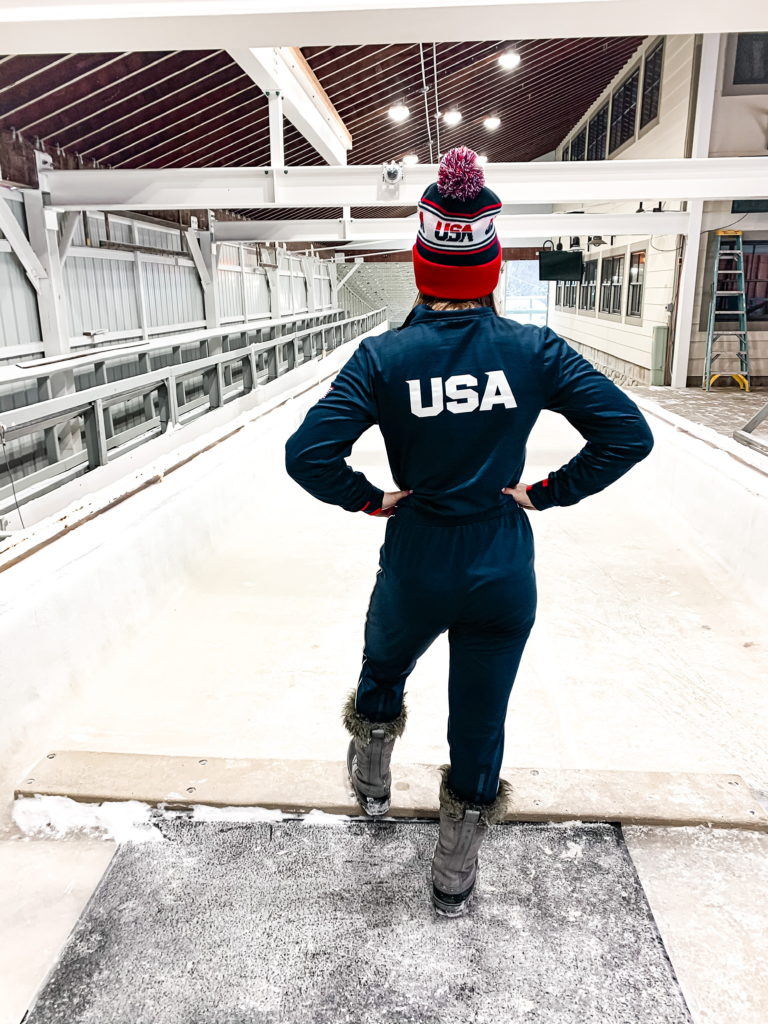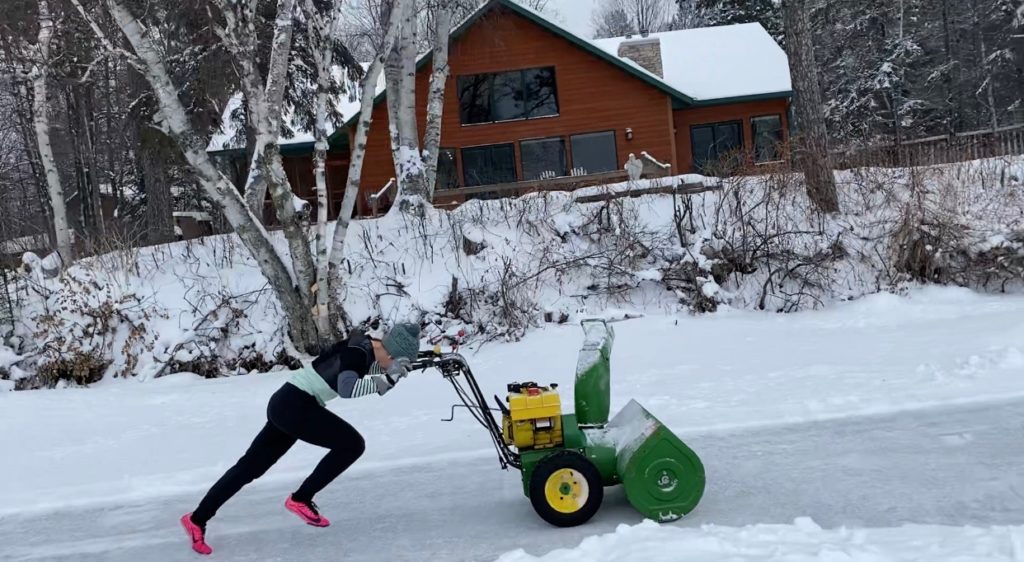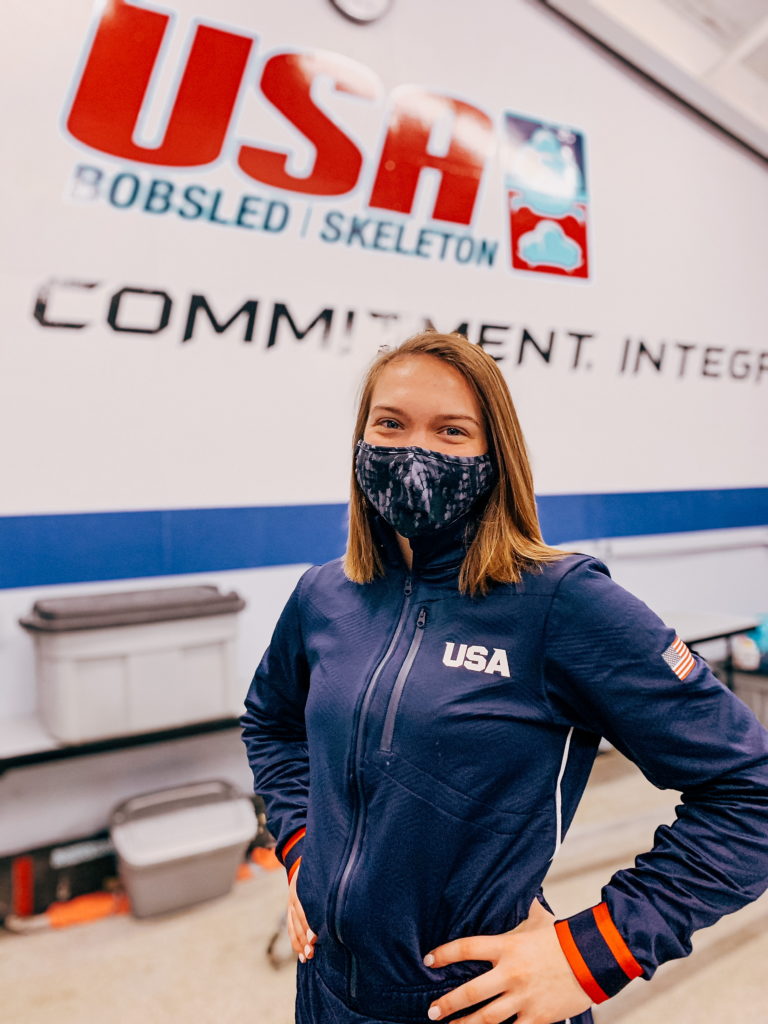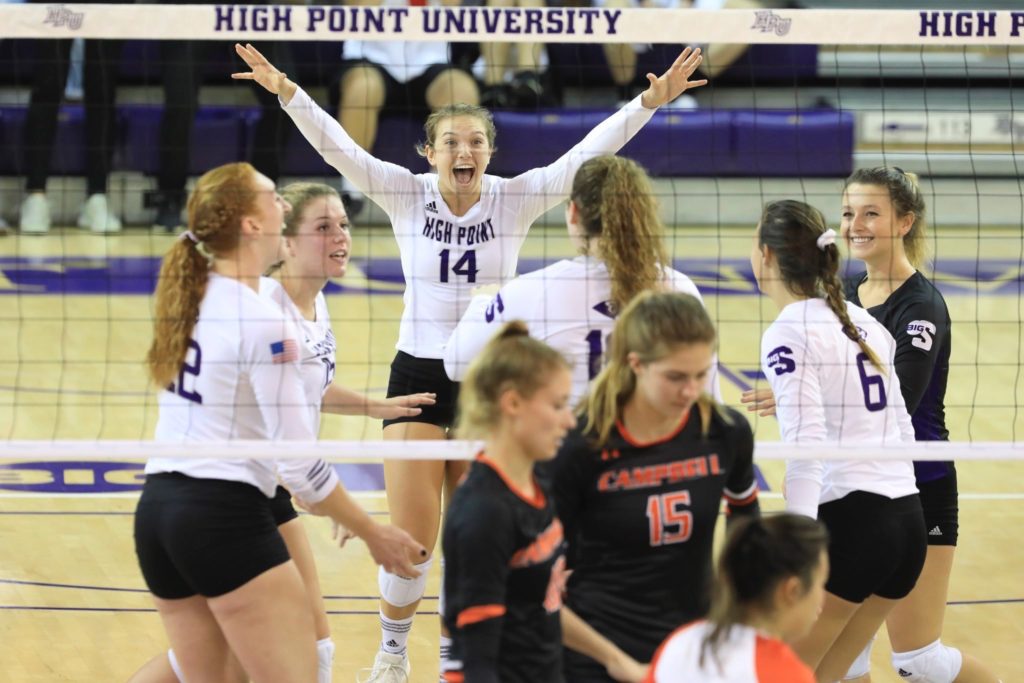As the Beijing Olympics kick off this February, Jenna Weidner will be watching with more interest than she’s ever shown the Winter Olympics.
That’s because she’s got her eye on competing in the 2026 games.
The 23-year-old Minnetonka resident is currently part of a 20-member development hoping to compete for Team USA Bobsled at the Milan games. When she’s not on the track, she’s training at F2P Performance in Eden Prairie.
“For all of us (on the development team) the goal is to make the Olympic team,” said Weidner. “But it’s not a sport that just clicks and you are a master.”
November marks the one-year anniversary of Weidner’s first bobsled run. And the 2016 Minnetonka High School graduate can’t help but marvel at the path her life has taken over the last year – much of the change facilitated by the pandemic.
Introduction to bobsled
Weidner graduated from North Carolina’s High Point University in 2020 with a degree in accounting. She was working as an audit associate at CLA (CliftonLarsonAllen) in Minneapolis when she received a recruiting email from USA Bobsled Head Coach Mike Kohn. At that point, Weidner had been “retired” for more than four months from playing Division 1 volleyball.
“Honestly, I read the email and I didn’t think it was real,” said Weidner.
She eventually responded to Kohn, telling him she knew nothing about bobsled.
Kohn told her that wasn’t a problem. “No one ever does,” she recalled him saying.
Weidner said Kohn explained that the team wasn’t looking for someone who knew how to bobsled. The team was looking for developed bodies like those achieved in “explosive” sports from volleyball to weightlifting to track and field.
Kohn asked Weidner to submit videos of herself sprinting, doing a broad jump and throwing a medicine ball so they could analyze her skill set and see if she would make a good bobsled pilot.
Park City
Based on what coaching staff saw in those videos, Weidner was invited out to Park City, Utah last November to try bobsled and skeleton. But Weidner wasn’t sure either sport was in her future – “I don’t even drive fast in my car,” she said.
Curiosity fueled her trip to Utah. “I had no expectations,” said Weidner.
That turned out to be a good thing as Weidner was the first in her group to try out bobsled on the Park City track – one of only two bobsled/luge/skeleton tracks in the United States (the other is in Lake Placid, New York).
For Weidner, who is a self-proclaimed overthinker and over-preparer, the notion of going first gave her a “mini heart attack.”
“I didn’t even get confirmation that someone made it down safely!” she recalled.
Starting at Curve 6 of the 15-curve track, Weidner pushed aside her panic and hopped in the sled.
“Something came over me,” she said. “I was oddly calm.”
With a simple goal of just getting to the bottom, Weidner enjoyed the adrenaline-pumping ride where she hit speeds of 55 miles per hour. And once she made it safely to the bottom, Weidner’s life was forever changed.
“I don’t think they could have driven me back up fast enough,” she said. “It was so different than anything you’ve ever felt before.”
Pandemic perks
Weidner loved both skeleton and bobsled, but she felt drawn to bobsled because it offered better overall visibility than skeleton. As she finished the first training camp, Weidner was invited back for a second bobsled camp the following month. In January 2021, she competed in her first North American Cup, after which she was officially considered part of the bobsled pilot developmental team – the only Minnesotan in the bunch.
“It’s not a sport that comes easily,” she said. “The pilots that are going to the Olympics have 10 to 15 years of preparation.”
That’s where the silver lining of a global pandemic comes into play. “Had it not been for COVID and had I not been working from home, I’m not sure I would have pushed to pursue it,” said Weidner.
Despite taking a new job as an internal auditor at UnitedHealth Group in June, Weidner has been able to continue working remotely. The flexibility of doing so gives Weidner the freedom to travel back and forth to Park City to train and compete.
“They’ve been great,” said Weidner, of UnitedHealth Group.
Preparations
When she’s training, Weidner tackles two to three runs a day. “You’re only on the track for about 30 minutes,” she explained. “It takes so much out of you.”
Much of bobsled is about the mental and physical preparations for the runs. “We do track walks every single day in spikes,” said Weidner. “We study the curves and the quality of the ice.”
“It’s all about how do I make this run smoother,” she explained, adding that she’ll even do “mind runs” where she visualizes the track and steers her way down it in her head.
“Yes, we do actually drive the bobsleds,” she said. Using the gravitational pressures exerted upon them as they careen down the track at speeds of 75 miles per hour (or more), “D rings” attached to cables control the runners under the sled. “We can only steer when we’re in a pressure,” said Weidner. “You need the G forces to push you into the wall.”
Pilots are constantly making adjustments as they go. “It’s like playing 18 rounds of golf in 60 seconds,” she explained. “But as you move further up the track, the turns and decision-making get easier.”
Even crashing can help one get better in bobsled. “You will crash,” said Weidner. “My first crash, I got some bruises, but it made me want to do it more. Crashing definitely helps you learn.”
Away from the track, Weidner can be found at Eden Prairie’s Fast 2 Precise (F2P) with her personal trainer Nick Pinkelman. “I do squats, Olympic lifts and sprint work,” she said, noting that those exercises help her achieve a strong start to her runs.
Last winter, Weidner’s dad and grandfather even built her a push cart so she could simulate bobsled starts on lake ice. “It was amazing,” she gushed. “Such a useful tool.”
Fundraising
While Weidner works on getting better at bobsled, she’s also working on raising money for this new venture – all in the hopes of achieving her Olympic-sized goals.
“Bobsled is an expensive sport,” she said. “The government doesn’t provide funding. Athletes are self-funded.”
I don’t think they could have driven me back up fast enough. It was so different than anything you’ve ever felt before.”
Jenna Weidner
Weidner said she was used to buying new volleyball pads and shoes during her volleyball career, but those costs pale in comparison to bobsled where travel, housing, food, and even ice time add up quickly.
Weidner estimated that a bobsled season can run upwards of $20,000. The biggest expense are runners for the sled – they cost between $5,000 and $15,000.
Weidner is currently saving up for one basic pair of runners. She started a GoFundMe campaign to cover the $7,000 cost of the runners and is eager to reach her target.
“This is such an awesome experience,” she said. “I’m so lucky to be doing this.”
Follow Jenna’s bobsled season on Instagram @jennaweidner.
Comments
We offer several ways for our readers to provide feedback. Your comments are welcome on our social media posts (Facebook, X, Instagram, Threads, and LinkedIn). We also encourage Letters to the Editor; submission guidelines can be found on our Contact Us page. If you believe this story has an error or you would like to get in touch with the author, please connect with us.







